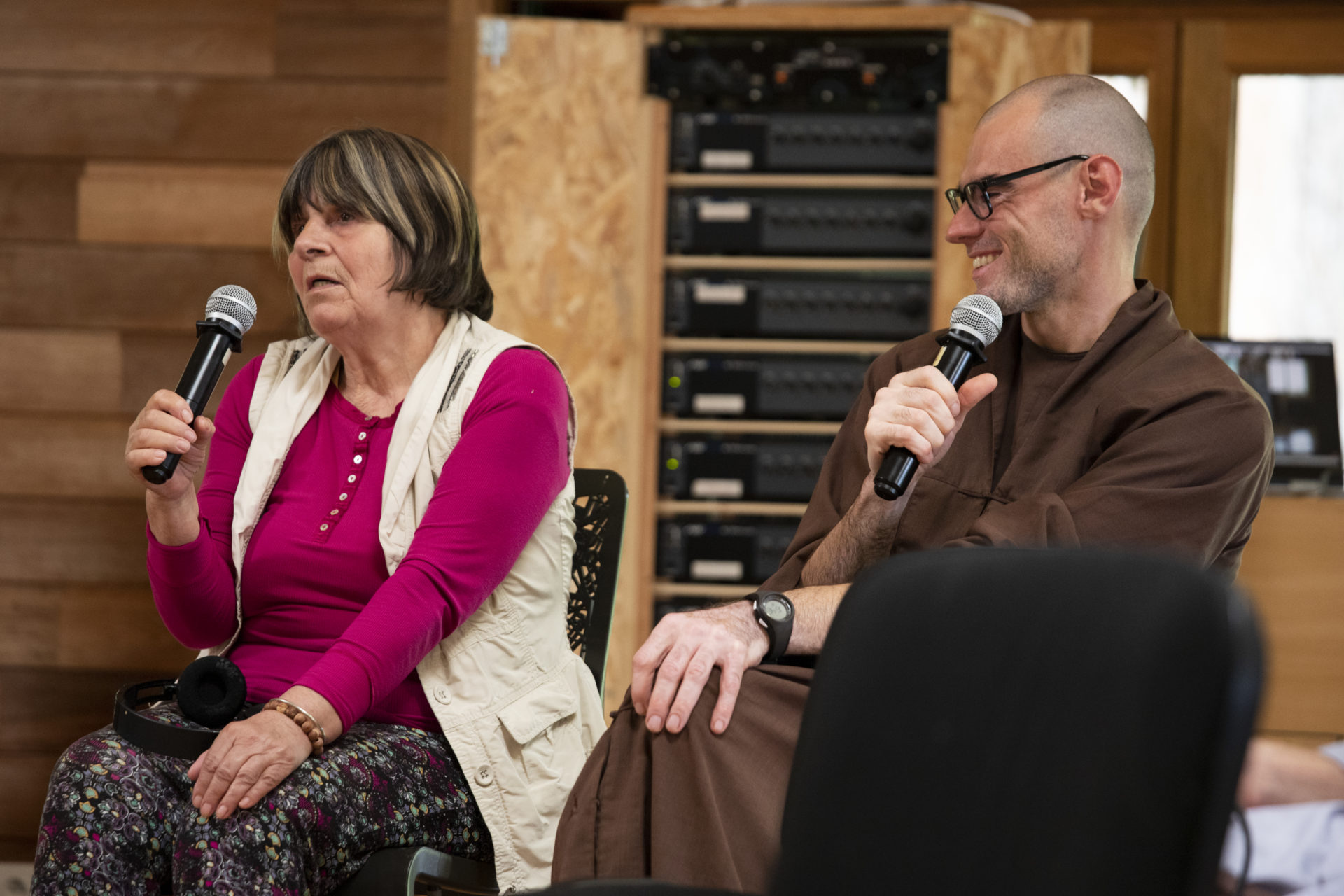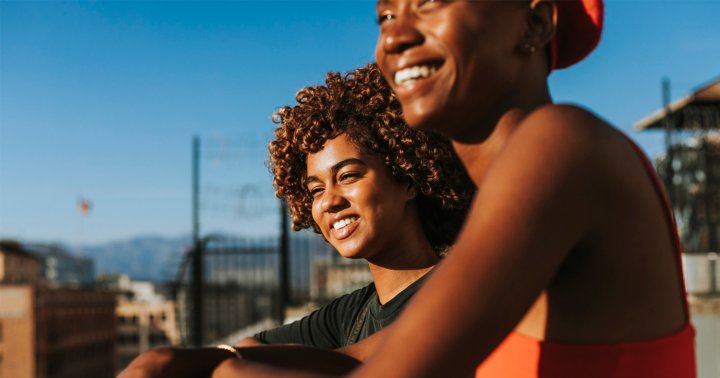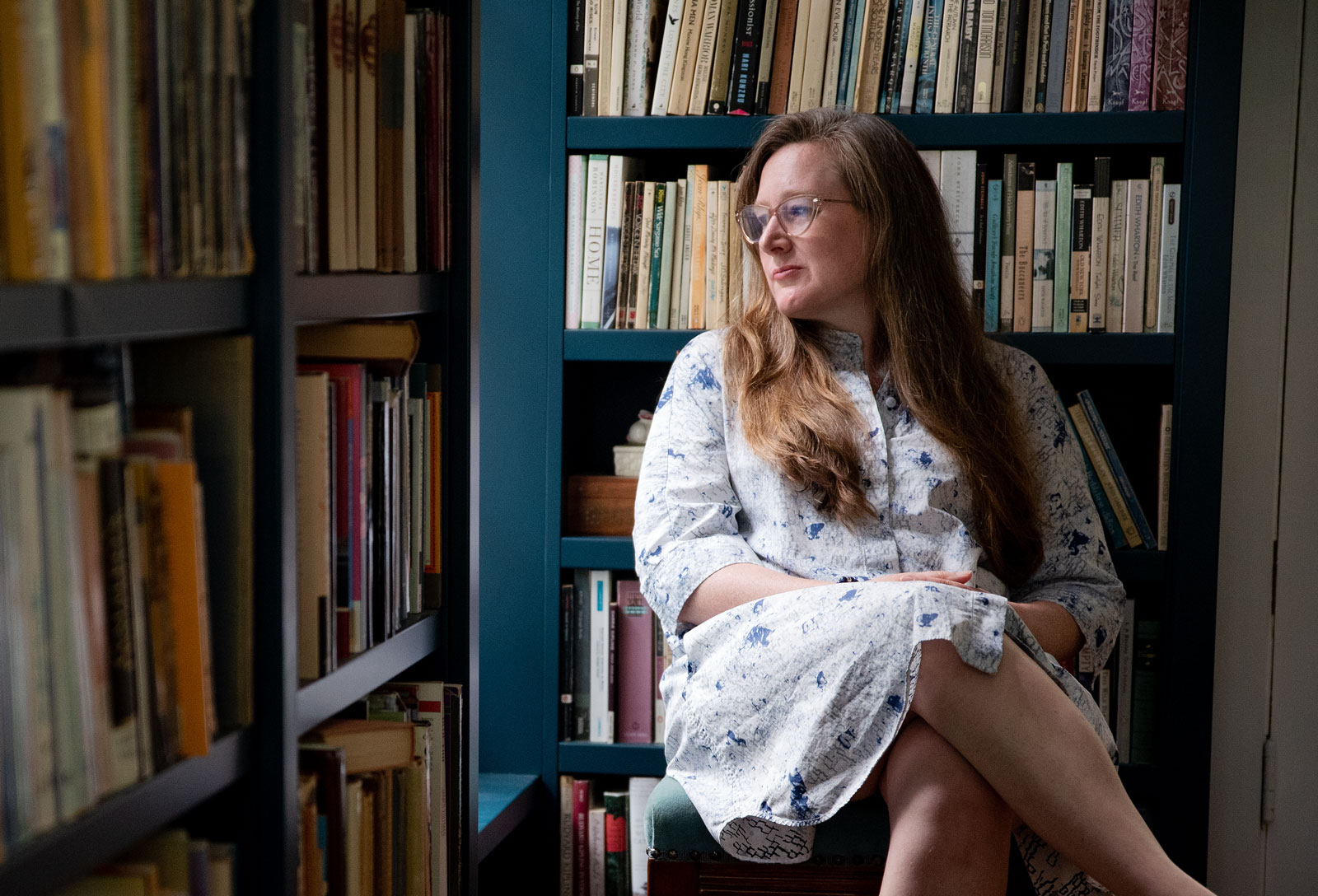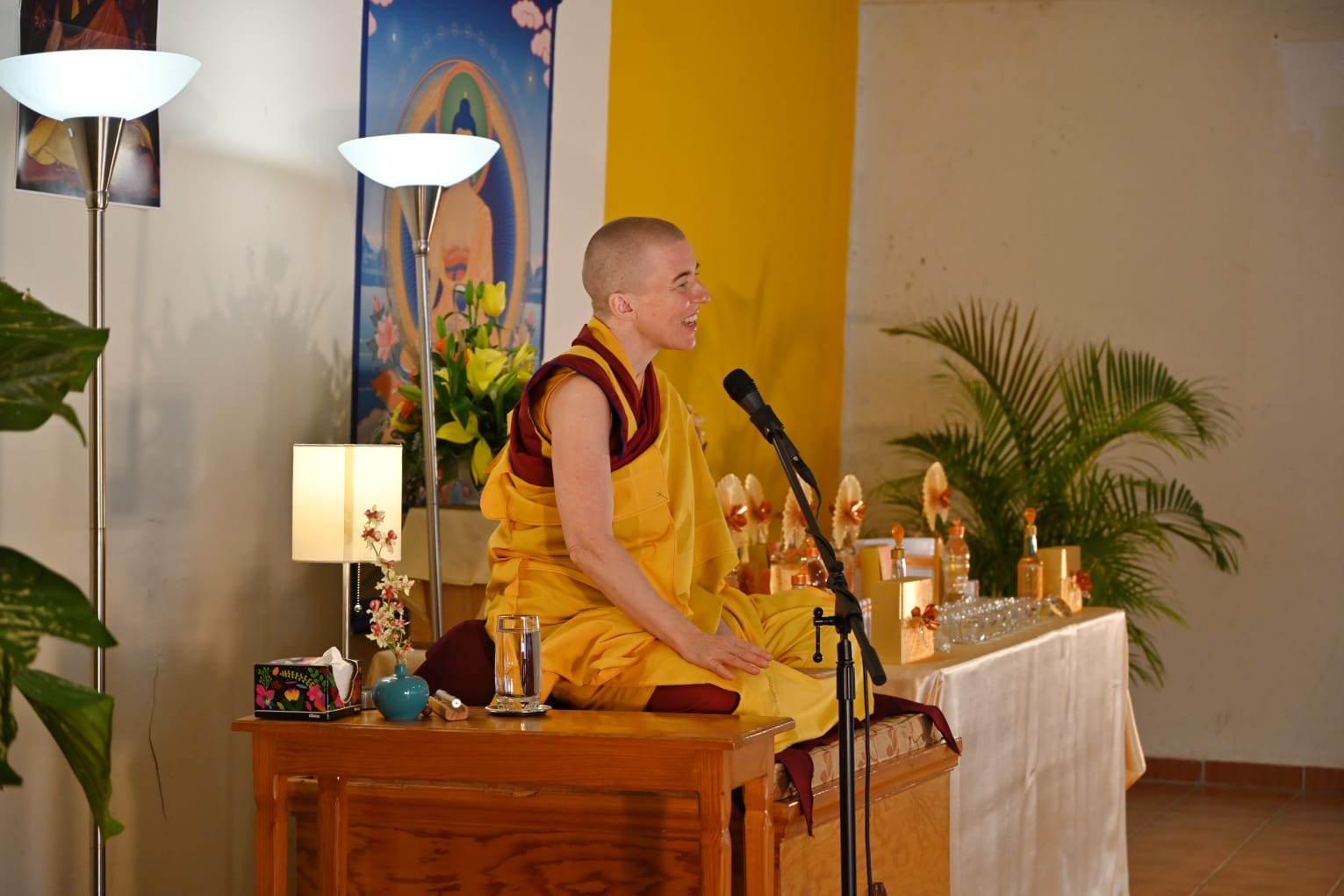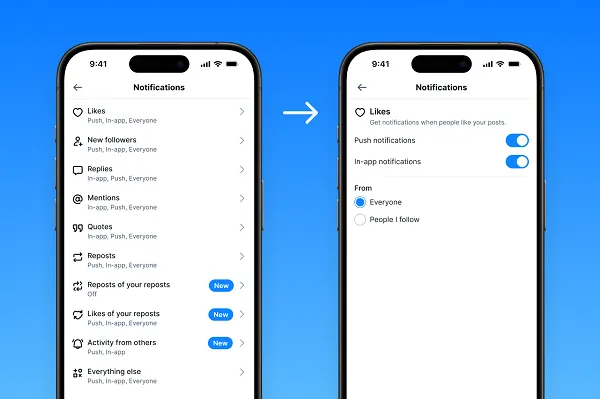Ardha Uttanasana: Unleash Your Yoga Potential with Half Forward Bend
The post Ardha Uttanasana: Unleash Your Yoga Potential with Half Forward Bend appeared first on The Yoga Nomads.

In my experience as a yoga teacher, one of my most frequently given cues involves the words “inhale” and “halfway lift…” Can you guess which yoga pose I’m talking about?
If you guessed Ardha Uttanasana, you’re exactly right! Also known as Half Forward Fold or sometimes Upward Forward Fold, this transitory asana is integral to many traditional yoga sequences.
If you’ve been practicing yoga for a while, you likely know the Sun Salutation sequence like the back of your hand. For any level of practitioner (even yoga teachers!), certain movements can become so familiar that we end up just going through the motions.
But to get the most out of each yoga session, we must always return to the intention of each movement and each breath.
When you slow down and examine the overlooked parts of your flow, you’ll find that transitions are just as essential and intentional as a sequence’s more dynamic or “peak” poses.
So, let’s take a few moments now to highlight one of the most-used transitional postures, Ardha Uttanasana or the Half Forward Fold.
Introducing Ardha Uttanasana
When I was first trying to learn all the Sanskrit names of various asanas, it helped me to know the definition of the terms — often, they are descriptive in a way that gives you a clue about what your body is doing.
For example, in Sanskrit:
Ardha = “half” Uttana = “stretch out” or “standing.” Asana = “posture”And when put together, we get Ardha Uttanasana, or “half standing stretch,” or Half Forward Fold. Because we typically enter this asana with a lifting motion, some may also call it Upward Forward Fold.
Now that you’re familiar with this asana let’s explore its significance!
Use in Yoga Sequences
Given its popularity and widespread use, you might be surprised that Ardha Uttanasana is a relatively new posture in yoga’s evolution.
This asana rose to popularity with the expansion of Hatha and later Vinyasa yoga throughout the 20th century. The past hundred years have produced many iconic yoga sequences like the Sun Salutation, Moon Salutation, and the Ashtanga Primary Series.
Ardha Uttanasana became a key addition to the vast library of asanas due to its transitional function. In the Sun Salutation sequence, for example, you’ll find this asana nestled between the Forward Bend and Chaturanga poses and paired with an inhale.
Adding this Half Forward Fold before stepping back to Chaturanga allows for a continuous flow of movement while maintaining a connection to the breath.
But it’s not just a bridge connecting one asana to another — it holds its profound significance.
Ardha Uttanasana’s Significance
Of course, every yoga practice is an individual journey. Different people may find a wide variety of meanings within the same concept. Here are some ways we can find deeper meaning as we breathe and rise into Upward Forward Fold.
Spiritual Symbolism
Ardha Uttanasana acts as a bridge between yoga poses but also can represent a symbolic bridge between the earthly and divine realms.
It symbolizes humility, surrender to the divine, and respect towards Mother Earth first as you bend forward. Then, it signifies reaching out to the divine energies in the universe as you inhale and rise into a flat back.You also may recognize the element of duality within the posture. Your lower body is solid and stable, with your feet rooted to the ground. Simultaneously, your upper half moves freely, flowing with your breath.
If you think about it, lifting into the Upward Forward Fold is similar to a mindfulness practice. We stand rooted in the present moment while acknowledging each breath as it comes.
Chakra Connection
Energetically, Ardha Uttanasana is a powerful asana related to two different chakras or energetic points in the body..
The 6th chakra or “third eye” is closely linked with Ardha Uttanasana, also known as the upward forward fold. This chakra governs intuition and wisdom.
The Sacral (2nd) Chakra: this asana engages the core muscles and stimulates the second chakra, which promotes emotional balance and creative expression. The Third-Eye (6th) Chakra: the movements associated with Ardha Uttanasana stimulate the third-eye chakra to encourage introspection and strengthen intuition, bringing clearer inner vision.Next time you’re flowing through this transition, see if you can connect to one of these spiritual affirmations or energetic concepts, and notice if it changes your experience on your mat.!
Step-by-Step Guide to Ardha Uttanasana

Let’s get down to the nitty-gritty of Ardha Uttanasana, also known as the Upward Forward Fold. We’ll look at how to enter and exit the position, give tips for maintaining correct alignment, cover common mistakes, and offer suggestions for modifications.
We’ve broken the instructions into different steps to cover the asana from beginning to end.
Initial Positioning for Starting the Pose
Before moving into Ardha Uttanasana, you must begin in a regular Standing Forward Bend (Uttanasana).
Stand straight with your feet hip-width apart. Distribute your weight evenly between both feet. Inhale deeply. On an exhale, bend forward from your hips (not your waist). Let your head hang and relax the back of your neck. Keep your knees slightly bent if your hamstrings are tight.Move into Ardha Uttanasana
From your Standing Forward Bend, make your way into Ardha Uttanasana by following these steps:
Prepare to lift your torso by first engaging your core muscles. As you inhale again, use your core and back muscles to lift your torso so it’s parallel to the floor. Place your hands on your thighs, shins, or ankles, or keep your fingertips on the floor in front of you. Keep a flat back and pull in your belly to support your lower back. Fix your gaze on the floor a few feet in front of you.Exiting the Posture
You may choose to hold your Ardha Uttanasana for a few breaths to strengthen your core and back and to give your legs a nice stretch. Or, keep flowing through your sequence with one of the following options.
Return to Stand
As you exhale, release your torso to Uttanasana or Forward Bend. Bend your knees slightly and roll all the way up to stand in an upright position.Move Through a Vinyasa
From Ardha Uttanasana, exhale and release your torso down toward the floor. Plant your hands on your mat and step your feet back to Chaturanga, Plank, Downward Dog, or a Lunge Position.There are many possibilities of where you can go from Ardha Uttanasana. Whether you hold the stretch for a few breaths or use it as a brief transition, remember to always exit with your exhale!
Correct Alignment And Breathing Pattern
As a transition, your time in this pose might be brief. However, there are many helpful cues yoga teachers can offer. Here are some crucial tips to refine your Ardha Uttanasana and be sure you are practicing correctly!
Reach the crown of your head forward and press your shoulders away from your ears. Keep your gaze down to maintain a neutral neck position. The chest should be open, with your collarbones spread wide. Inhale to lift into Ardha Uttanasana and exhale to release. If you hold the stretch, keep your breaths flowing deeply and evenly.Even in a yoga sequence, when you’re only in Ardha Uttanasana for one breath, you should always strive for optimum alignment!
Contraindications and Cautions for Ardha Uttanasana
Half Forward Bend Pose is typically one of the first poses new students learn in a yoga class and is considered a beginner-level asana. However, that doesn’t mean it is without risk! There are some cases where students should exercise caution.
Health Conditions to Consider
People with certain health conditions should avoid or modify this pose. These include:
Students with back and neck problems Recent spinal injuries such as slipped or herniated discs Lack of flexibility or pulled hamstring Pregnancy: the extra weight of the belly could strain the lower back musclesIf you’re in this group, always consult your doctor before trying Ardha Uttanasana.
Common Mistakes and Injury Risks
Injuries can happen if you’re not careful in Ardha Uttanasana. Here are some common mistakes:
Neglecting to engage the core and initiating the movement using only the back muscles. Keeping the rounded back as you lift Lifting the head to look forward, compressing the back of the neck Taking the weight into the heels Hyperextending or “locking out” the kneesMy best advice as a yoga teacher? Rather than thinking of Ardha Uttanasana as a hamstring stretch, focus on maintaining a long spine flat back. Of course, the backs of your legs will still feel the stretch, but you’ll be sure you’re safely practicing the asana, preventing any injuries.
Modifying and Varying Ardha Uttanasana
It’s important to remember that different yoga poses may not look the same for each student. With Ardha Uttanasana or the Upward Forward Fold, your hand placement can vary depending on how flexible you are.
But did you know your body proportions can also make a big difference? For example, if you have long legs and a shortero, you might be unable to keep your fingertips on the ground in this posture. And that’s okay!
The crucial thing is that you safely achieve the intention of this asana — stretching and strengthening the back side of the body — whatever that may look like for you.

Variations for Beginners
For beginning students, I always recommend starting with a slightly modified position for Ardha Uttanasana, which they can progress from gradually as they become more flexible. Try these simple modifications if you’re just starting out.
Keep your knees bent: this could be a micro-bend or as much as you need! It might seem counterintuitive, but your hamstrings will still lengthen in this altered position without straining your lower back. Change your hand position: start by placing your palms on your thighs to achieve your flat back position. If that feels comfortable enough, move them down to your shins or even your ankles.Using Props for Support
Yoga blocks (like these from Lululemon) can offer extra support in this pose. Place two blocks on either side and slightly ahead of your feet. Press your palms into the blocks and straighten your arms as you inhale into Ardha Uttanasana. If the blocks are still a bit too far of a stretch for you, try using a chair instead. Place the chair in front of you with the seat facing towards you. Rise into Ardha Uttanasana and reach your arms forward, resting your hands on the seat of the chair. A wall can work, too. Stand facing a wall, about an arm’s length away. Lean forward from the hips and press your palms into the wall at waist height.
Lift and Lengthen Yoga Block
Advanced Modifications
Seasoned yogis looking for more challenge can try these modifications:
Keep the fingertips or palms on the floor, lifting the chest and head to Ardha Uttanasana. Wrap the index and middle fingers around the big toes and hold them there as you inhale to Half Forward Bend. Slide the palms under the feet, with the backs of your hands on your mat (Gorilla Pose or Padahastasana). Keep your hands under your feet as you rise halfway to Ardha Uttanasana.Remember to keep breathing deeply throughout each variation of Ardha Uttanasana, no matter how advanced or beginner-friendly!
Benefits of Regular Ardha Uttanasana Practice
Now that you know the ins and outs of this asana, let’s find out why you should add Ardha Uttanasana into your yoga sequences!
Physical Benefits
Whether practiced independently or in a Sun Salutation, Ardha Uttanasana brings several physical benefits.
Increased strength: This yoga pose involves extending the spine and engaging the core muscles. Over time, this builds strength in these areas. Enhanced flexibility: The stretch involved in ardha uttanasana helps to loosen tight hamstrings and improve overall flexibility. Improved mobility: The action of moving into and out of Ardha Uttanasana mobilizes the spine, reducing stiffness and relieving back pain.Balance and Breath Awareness
Ardha uttanasana isn’t just about physical fitness; it also offers mental benefits. By focusing on your breaths during this pose, you can reduce stress and enhance focus.
Stress reduction: Focusing on deep, slow breathing during this pose helps to calm the mind. Enhanced focus: Maintaining balance during ardha uttanasana requires concentration, which can improve mental clarity over time. Increased mindfulness: Linking your movements with your breaths is a powerful mindfulness practice, helping you to focus on the present moment.Holistic Health Advantages
Beyond physical strength and mental clarity, the Upward Forward Fold holds holistic health benefits, too.
Better digestion: This forward bend position stimulates abdominal organs, aiding digestion. Improved circulation: As you fold forward in Ardha Uttanasana, blood flow to the brain increases, improving overall circulation and energizing the body.It’s pretty remarkable that this one small part of a Sun Salutation can bring so many positive effects to your yoga practice! Hopefully, you’ve gained a new appreciation for the Upward Forward Fold.
Mastering Ardha Uttanasana
Having explored the significance, steps, contraindications, modifications, and benefits of Ardha Uttanasana, it’s clear that this yoga pose holds more purpose and power than some give it credit for.
Its ability to strengthen the body while promoting mindfulness makes it a valuable addition to many yoga sequences. However, as with all exercises, it’s crucial to approach Upward Forward Fold with awareness and attention to alignment.
Remember that every individual’s yoga journey is unique; don’t rush or force yourself into poses that cause discomfort or compare yourself with what this pose may look like for other people.
Instead, get curious! Try different modifications to see what feels right in your own body. By embracing the process of gradual improvement, Ardha Uttanasana will help you progress in your yoga practice.

FAQ 1: Is Ardha Uttanasana suitable for beginners?
Yes. While Ardha Uttanasana requires some flexibility in the hamstrings, modifications with various props can make it accessible for beginners.
FAQ 2: Can I practice Ardha Uttanasana if I have a back injury?
It depends on the nature of your injury. Consulting your healthcare provider or a qualified yoga therapist is highly recommended before practicing this pose with a back condition.
FAQ 3: How often should I practice Ardha Uttanasana?
The frequency can vary based on individual goals, comfort levels, and what yoga sequences you generally prefer. However, regular practice—such as daily or every other day—can help maximize benefits.
FAQ 4: What are some common mistakes in Ardha Uttanasana?
Common mistakes include rounding the spine excessively or locking out the knees. Both can strain these areas instead of stretching them safely.
FAQ 5: Can pregnant women perform Ardha Uttanasana?
Pregnant women can usually perform this pose safely with modifications under professional guidance. Always consult your doctor before starting any new exercise regimen during pregnancy.
FAQ 6: What other yoga poses complement Ardha Uttanasana?
Poses such as Tadasana (Mountain Pose), Adho Mukha Svanasana (Downward-Facing Dog), and Uttanasana (Standing Forward Bend Pose) can complement Ardha Uttanasana in a sequence.

 BigThink
BigThink 









